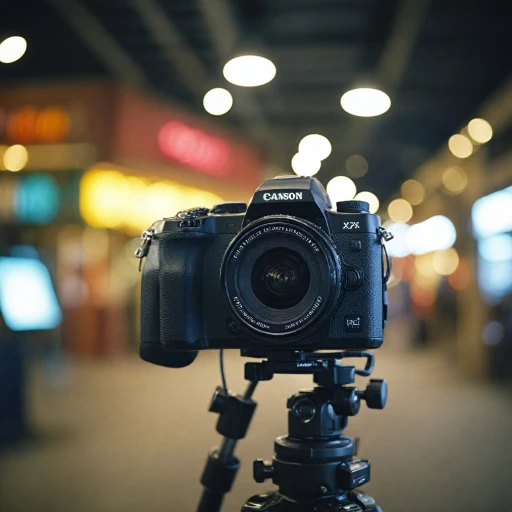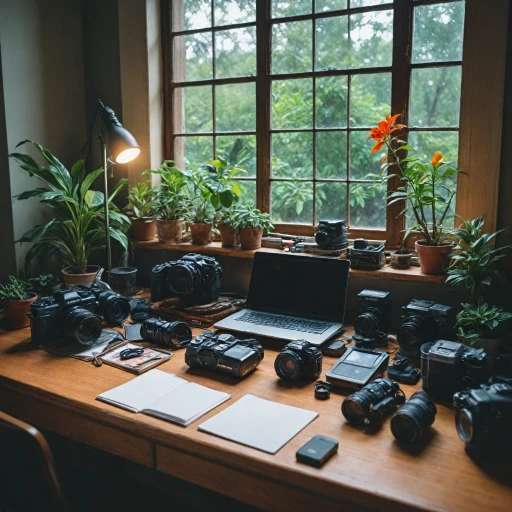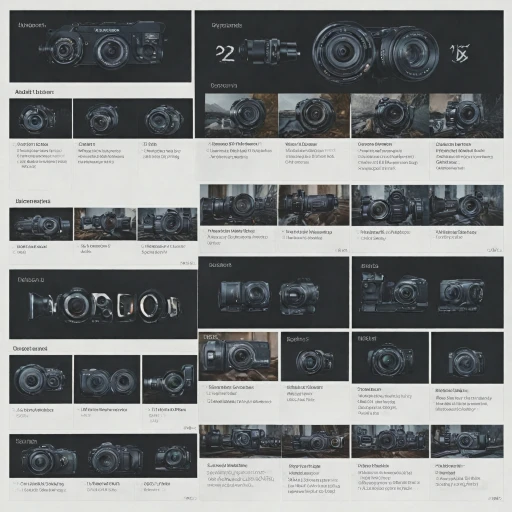
Understanding the Shutter Button
Grasping the Basics of Shutter Functionality
A camera shutter button might seem straightforward, yet understanding its intricacies is essential for mastering photography techniques. This seemingly simple button plays a crucial role in capturing unforgettable moments by controlling how long the camera's sensor is exposed to light.
The shutter button itself consists of various components: the button, soft release surfaces, and threaded bases for additional accessories like camera remotes. Many modern designs, such as those found in Fujifilm or Leica cameras, offer customizable options including concave buttons for better grip and precision. This customization often extends to other aesthetic aspects as well, with choices ranging in color from classic black to stylish brass finishes. As with most camera items, some companies also offer free delivery and free shipping on these accessories.
The functionality of shutter buttons has evolved over time, embracing innovations that contribute to a rapid shutter release without compromising on precision. Although prices can vary depending on brand and model, investing in a quality shutter button or soft shutter accessory can significantly enhance one's photography experience by enabling quick, fluid shots. Whether you're a professional or an enthusiast, equipping your camera with suitable shutter releases can prevent common errors and improve your photography game. Moreover, gentle maintenance of these features ensures their longevity among your collection of essential camera gear.
Types of Shutter Buttons
Varieties You Need to Know
Understanding the different types of buttons available can make a huge difference in taking your photography to the next level. From classic models to the newer innovations, there's a wide array to explore.- Standard Shutter Buttons: Generally the most common, these buttons are found on the majority of cameras. They usually feature a straightforward design that ensures reliability and ease of use.
- Soft Shutter Buttons: Known for their effortless touch, these are designed for smoother and more precise operation. The soft release feature is particularly favored by those looking for a gentle press when capturing moments, enhancing overall accuracy.
- Threaded Soft Shutter Releases: These buttons offer a classic feel with the capability to add accessories. Opting for a concave or convex button can depend on personal preference, but many photographers consider the threaded option indispensable for achieving a nostalgic or traditional look.
- Remote Shutter Releases: Essential for photographers who need to avoid any contact with the camera to eliminate vibration. Remote shutters come in various forms, such as wireless or through a hot shoe mount, providing flexibility for any photography style.
- Customized Buttons and Accessories: Camera brands such as Fujifilm and Leica offer specialized accessories like black, brass buttons, or even customizable items in black and red. These not only enhance the camera's aesthetic but also cater to specific operational needs, allowing a personal touch to your gear.
Techniques for Using the Shutter Button
Mastering Techniques for Effective Shutter Use
A proficient grasp of shutter button techniques can elevate your photography, whether you're a novice or an experienced shooter. Understanding the role of the button in capturing the perfect shot is crucial, and here we delve into some key techniques.- Soft Shutter Press: A gentle touch on a soft shutter can prevent camera shake, enhancing image clarity. Consider using a soft release button, especially if you're working with a Fujifilm or Leica model, where button accessories are readily available.
- Full Shutter Release: Press the soft release down smoothly and entirely to ensure a positive capture. Many cameras, like those offered with free delivery from online retailers in the United States, are equipped with a concave button design for more intuitive use.
- View Before You Snap: Use the right settings to capture the best moment view before quickly pressing the shutter button. This helps in framing and timing.
- Threaded Soft Releases: Opt for a threaded soft release button if your camera supports it. This item, available for quick and free shipping, can offer a greater range of control and an enhanced tactile experience.
- Remote Shutter Use: Incorporating camera remotes can also be a wise choice for those seeking precision. Pro versions, such as the Fujifilm Pro, offer advanced functions and broad compatibility with varied button schemes.
Common Mistakes with the Shutter Button
Dodging the Pitfalls of Shutter Button Usage
When it comes to mastering the shutter button, a few common missteps can stand in your way of achieving picture-perfect shots. Let’s explore these pitfalls and how to avoid them. One frequent issue is applying too much force on the camera’s shutter button. This can lead to camera shake, resulting in blurred images, especially in low-light conditions. Instead, you should embrace a gentle touch, almost as if you're engaging with a soft release feature. Whether you own a Fujifilm, Leica, or any other brand, maintaining this elegance in the press can greatly enhance the clarity of your shots. Another mistake is neglecting the half-press function, typically found on many digital and DSLR cameras. With this method, you can focus and measure exposure before fully pressing the button to capture the image. This technique is particularly useful for keeping the subject in sharp view, handy for enthusiasts and pros alike looking to perfect their work without fussing over overpriced accessories. Camera soft shutter release attachments come in various styles and materials like brass or concave designs, often seen in black or red hues. While they enhance the aesthetic appeal, they also provide practical benefits by offering significant tactile feedback. However, overspending on extravagant items isn’t always necessary. Affordable options, often available with free delivery or shipping, can be just as effective without breaking the bank. Lastly, don't overlook the importance of familiarizing yourself with alternative shutter releases, like wired or wireless camera remotes. These can be game-changers for reducing direct contact with your camera, further minimizing shake. With options to fit different budgets and preferences, such as those tailored for the Fujifilm Pro series, they serve as excellent investments for your tool kit. Avoiding these common errors will aid you in seamlessly capturing those unforgettable moments through your lens. By paying attention to the subtleties of working with your shutter release button, you can ensure your photography journey remains a positive experience.Maintaining Your Shutter Button
Proper Care for Consistent Performance
Maintaining the shutter button is crucial for ensuring that your camera continues to capture those perfect shots effortlessly. Given the importance of the shutter button in achieving precise timing and capturing motion, regular attention to its upkeep can save both time and money in the long run. Start by regularly cleaning your camera shutter button to prevent dust and debris from affecting its performance. Use a soft, lint-free cloth to gently wipe around the button, paying attention to any small crevices where dirt may accumulate. If your camera features a threaded soft shutter release, ensure the threads remain clean to maintain a smooth press.Preserve the Functionality with Care
When not in use, consider storing your camera in a protective case to avoid accidental damage to the button. Whether you’re handling a high-end Fujifilm pro model or a classic Leica, taking care of the shutter button extends the lifespan of the entire device. The button’s construction may vary, from brass to concave designs, often impacting both feel and durability. Consider investing in protective accessories like a soft release button. These simple items offer an enhanced shooting experience and come at a reasonable price, sometimes even with free shipping offers, particularly from sellers based in the United States. Ensure any replacement or additional buttons, like those for quick swaps or stylistic changes such as a black red color scheme, are compatible with your camera model. Popular camera brands like Fujifilm and Leica offer a range of accessories suited for maintaining optimal button performance. Regular maintenance of your camera shutter not only ensures high performance but also preserves the overall value of your equipment, ensuring those stunning shots continue to inspire and impress for many years to come.Innovations in Shutter Button Technology
Innovations Shaping the Future of Shutter Buttons
The evolution of camera technology has continued to enhance the way photographers engage with their craft. The modern-day shutter innovations are a focal point for any photography enthusiast seeking to fully master their tools. In recent years, shutter buttons have seen a wave of advances impacting performance, comfort, and even style.
Manufacturers like Fujifilm and Leica are at the forefront of innovation, pushing the boundaries of what's possible in photography. Their designs often feature concave buttons to improve the tactile response when using soft shutter releases. This can significantly enhance the speed and ease of capturing a fleeting moment.
One notable development is the incorporation of threaded soft release buttons. These buttons minimize the risk of accidental pressure, allowing for smoother, more controlled shots. This feature often finds delight among street photographers as they rely on quick reactions to capture rapid urban scenes.
Another contemporary trend is the customization of shutter buttons with eye-catching accessories. Options vary from brass to black or even black red finishes, allowing photographers to personalize their gear to align with aesthetic preferences. This not only adds a unique touch to the camera but also makes it easier to locate the button under various lighting conditions.
What about interconnectivity? With the rise of camera remotes, shutter releases in the market provide photographers the ability to control their camera without physical contact. These remotes offer seamless performance in various environments, from the comfort of a studio to the unpredictable outdoors. Many of these are coupled with free shipping and even free delivery offers in some locations, including the United States.
While new technologies offer plenty of positive modifications, it's crucial to consider the price involved. It's wise to start by exploring the different types of innovations available and walking your way through what suits your photography habits. Whether it's investing in a button made from durable materials like brass or opting for a quick view of the latest models, there's an option for every need.












